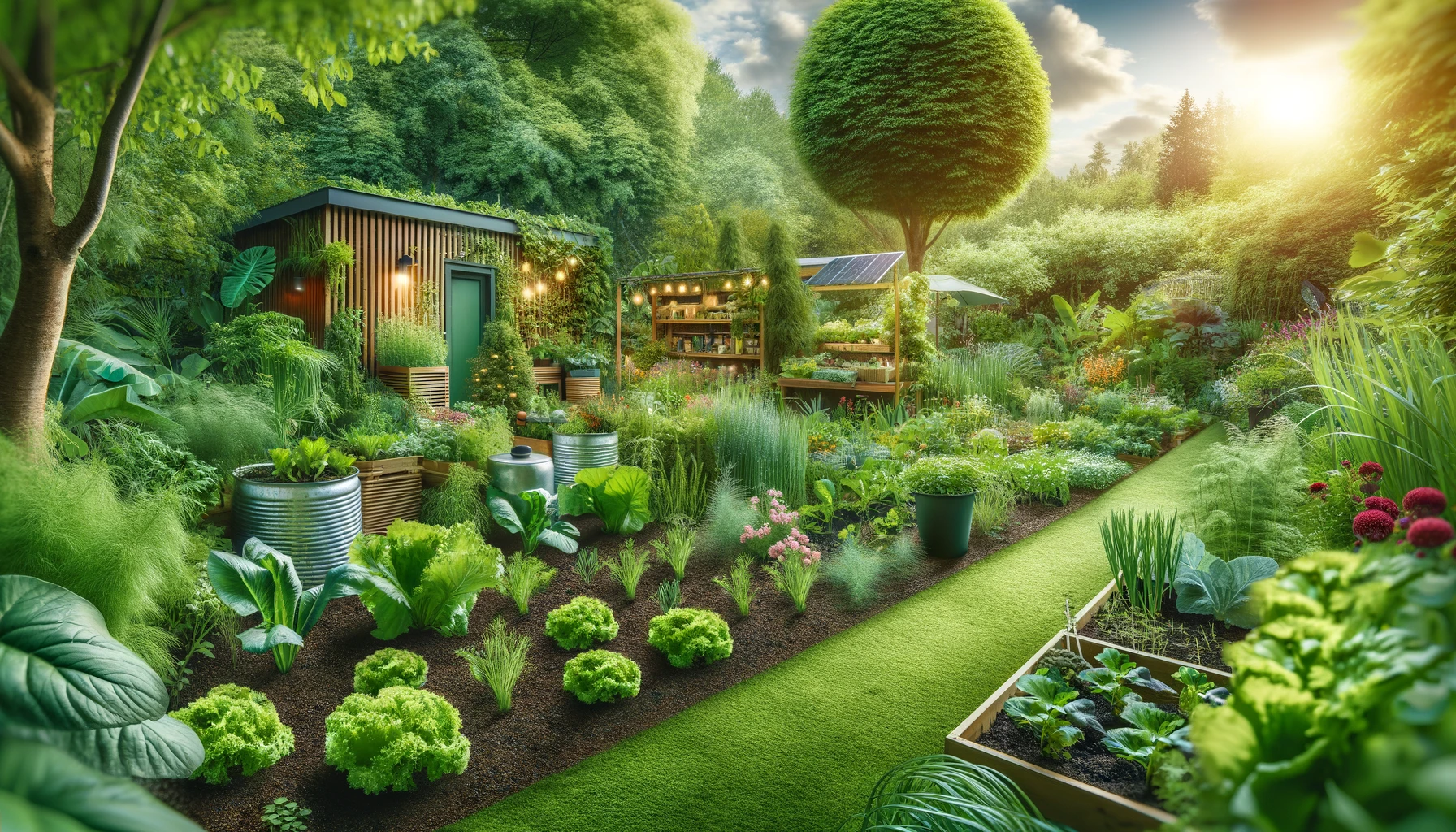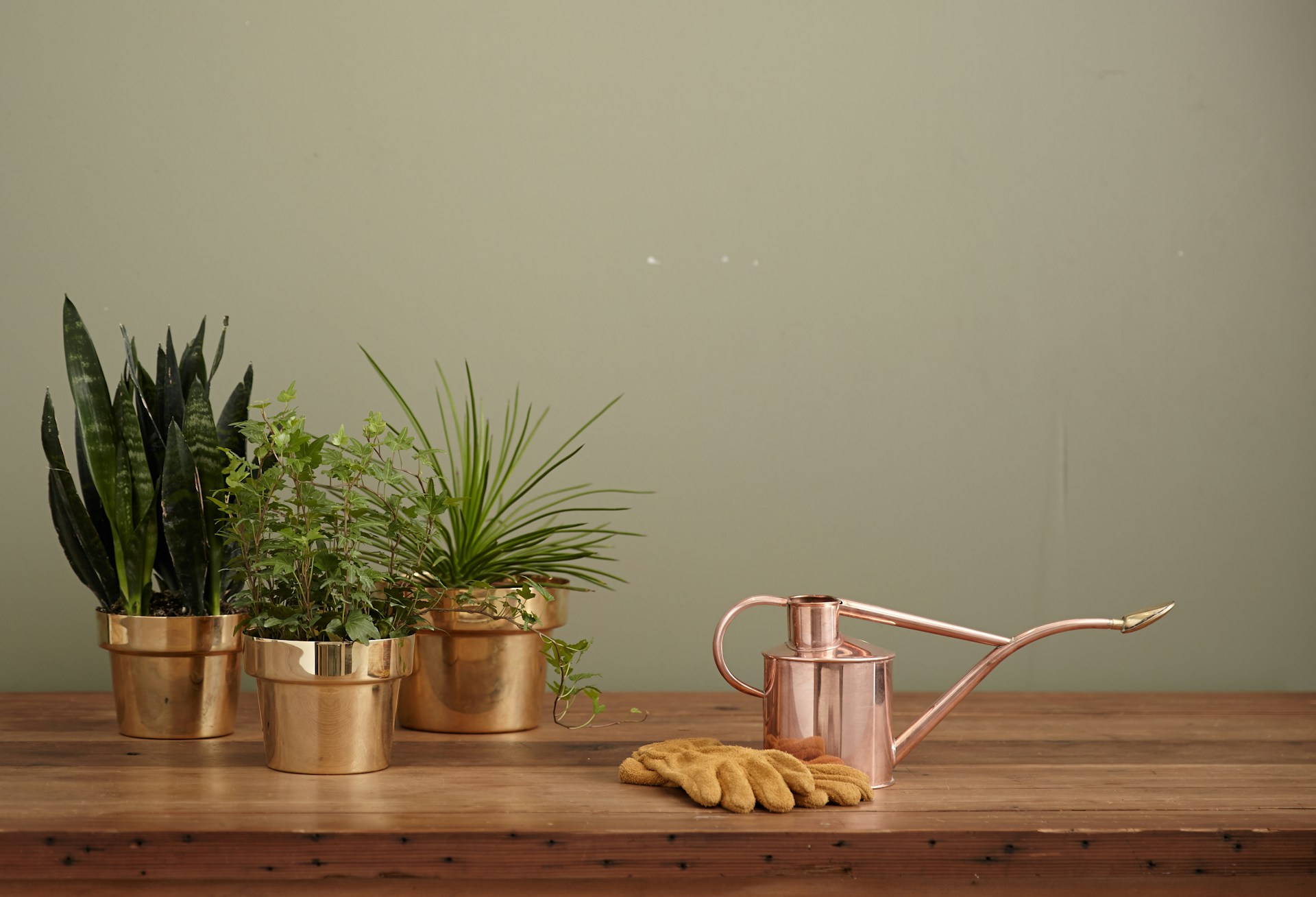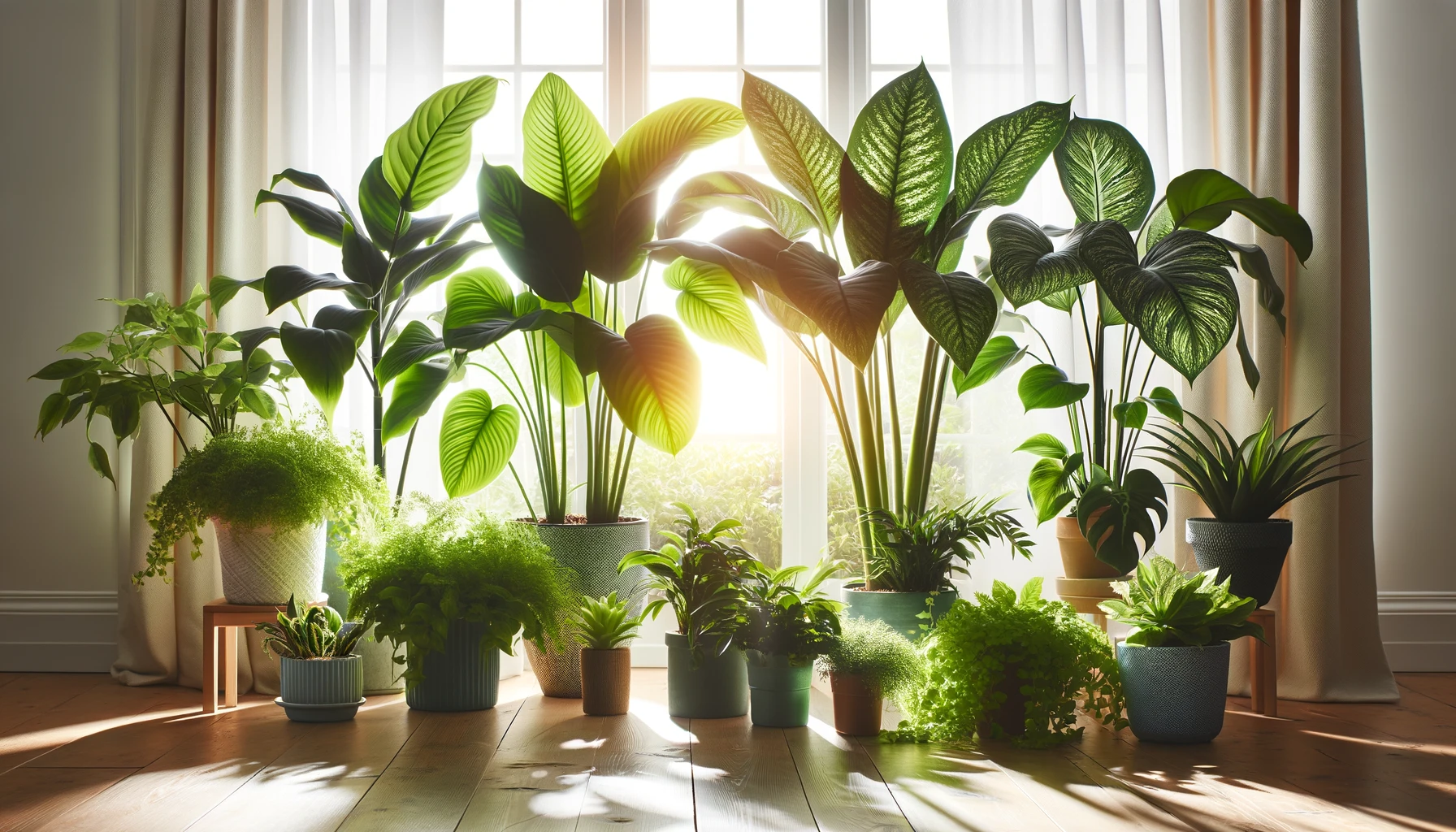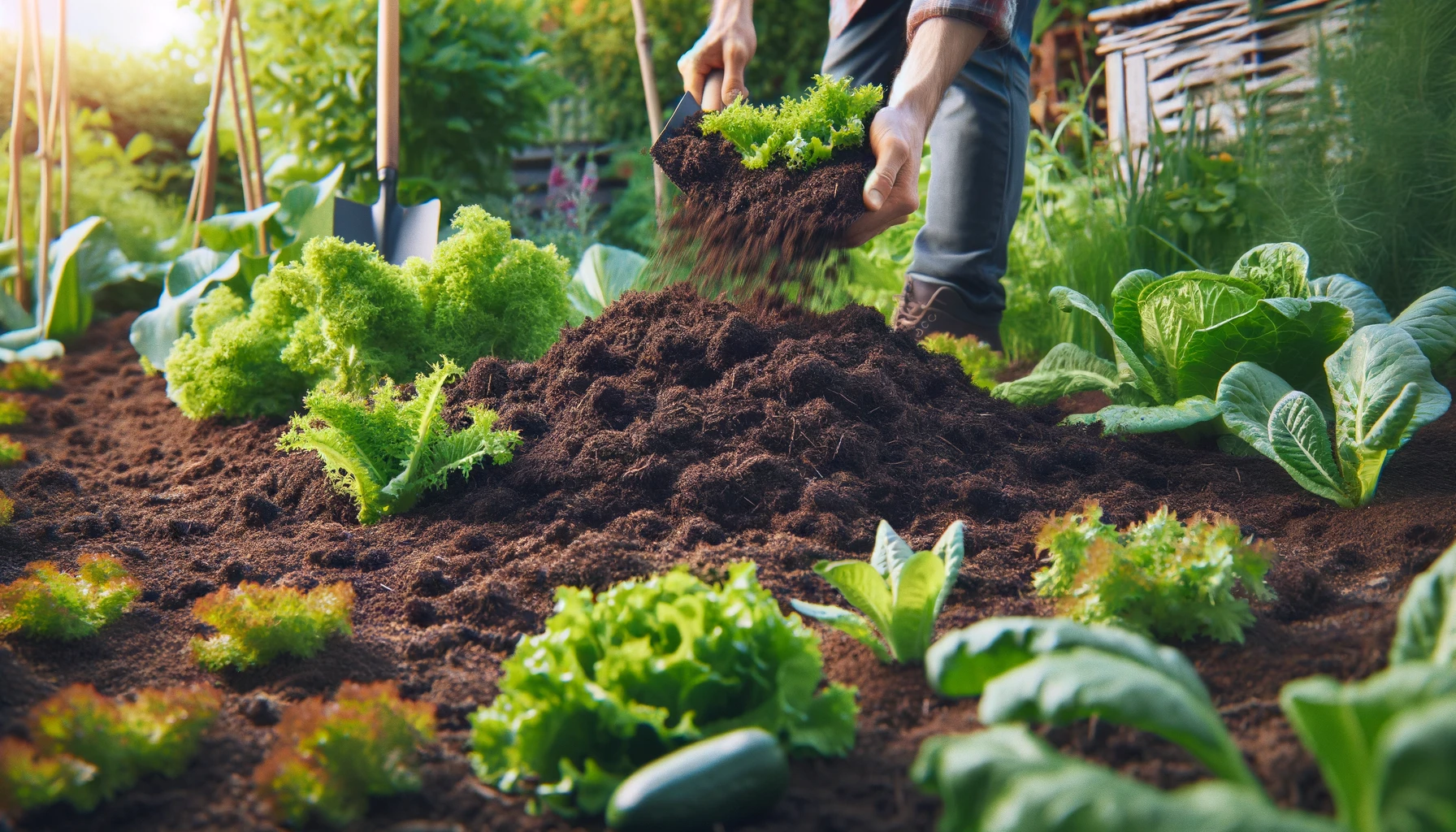This post contains affiliate links. If you buy something from one of our links we may earn a commission. Thanks
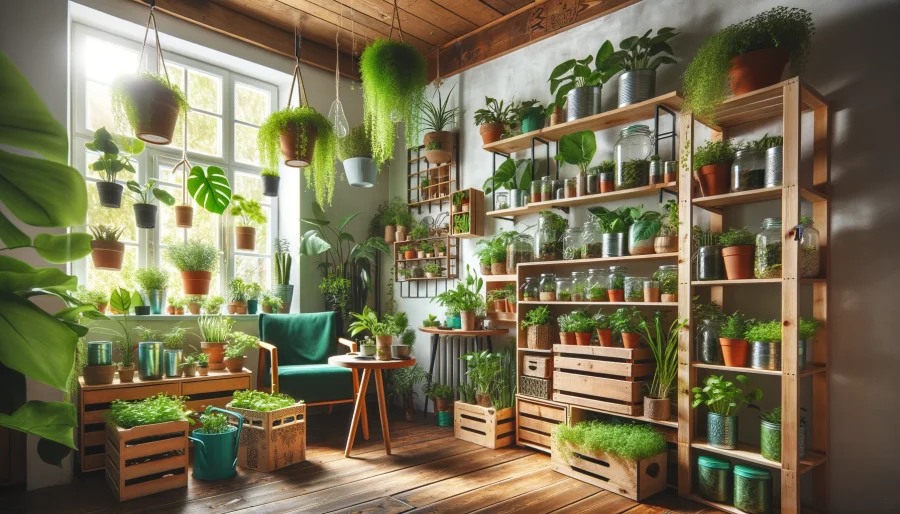
Discover the joys of green indoor gardening! Learn how to create a sustainable and eco-friendly indoor garden that brings nature into your home.
Green Indoor Gardening Key Takeaways:
- Green indoor gardening involves growing plants indoors in an eco-friendly and sustainable manner.
- It includes using recycled materials for pots, conserving water, and choosing plants that purify the air.
- This type of gardening not only beautifies your home but also contributes to a healthier environment.
Green Indoor Gardening: Recycling and Reusing Tips
Welcome to the world of green indoor gardening! Whether you’re a seasoned gardener or just starting out, there’s something incredibly rewarding about growing your own plants indoors.
Not only does it add a touch of greenery to your living space, but it also promotes a healthier, more sustainable lifestyle.
Let’s dive into the exciting journey of creating your own indoor garden oasis!
Embracing Eco-Friendly Practices
Indoor gardening is a wonderful way to bring a bit of nature into your home.
But it’s not just about the beauty of plants. It’s also about being mindful of our environment.
In this post, we’re going to explore some simple yet effective ways to recycle and reuse items in your indoor garden.
By adopting these eco-friendly practices, you can reduce waste and add a unique touch to your green space.
So, let’s dive into the world of sustainable indoor gardening and discover how to make your garden both beautiful and kind to the planet.
Why Recycling and Reusing Matter
Recycling and reusing materials in your indoor garden are crucial for several reasons.
First, it helps reduce the amount of waste that ends up in landfills.
Second, it conserves natural resources by giving a second life to items that would otherwise be discarded.
Finally, it can save you money, as you repurpose items you already have instead of buying new ones.
The Impact on Your Garden
Incorporating recycled and reused items into your indoor garden can have a positive impact beyond just sustainability.
It can also enhance the aesthetic appeal of your garden, giving it a unique and personal touch.
Additionally, using organic waste for composting can improve the health of your plants, leading to a more vibrant and thriving indoor garden.
In the next section, we’ll explore creative ways to reuse materials in your indoor garden.
Creative Ways to Reuse Materials: Adding Character to Your Indoor Garden

You don’t need to buy new pots or decorations for your garden. You can use things you already have at home. Here are some ideas:
Repurpose Containers: Giving Old Items New Life
- Yogurt Cups, Egg Cartons, or Coffee Cans as Plant Pots: Clean them out, add some drainage holes, and voila! You have perfect small pots for seedlings or succulents.
- Old Glass Jars or Bottles for Herbs or Cuttings: These can make beautiful containers for growing herbs or propagating plant cuttings. Plus, they allow you to see the roots develop.
Upcycling Ideas: Transforming Waste into Wonder
- Wooden Pallets or Crates into Plant Stands or Shelves: With a little creativity, you can turn these into stylish vertical plant stands or shelving units for your indoor garden.
- Old Tires into Rustic Planters: Clean and paint old tires to create unique, durable planters that add a rustic charm to your indoor garden space.
Benefits of Repurposing and Upcycling:
- Cost-Effective: You save money by not purchasing new items.
- Unique Style: Your garden gets a unique, personal touch that reflects your creativity.
- Sustainability: Repurposing and upcycling reduce waste and are good for the environment.
By incorporating these creative ideas into your indoor garden, you not only contribute to a healthier planet but also add a unique flair to your indoor space.
In the next section, we’ll explore how recycling organic waste can further enhance the sustainability of your indoor garden.
Recycling Organic Waste: Nourishing Your Garden Naturally
Your kitchen scraps and yard waste can be valuable for your garden. Here’s how to recycle organic waste:
Composting: Turning Waste into Gold
- Fruit and Vegetable Peels, Coffee Grounds, and Eggshells: These kitchen scraps are perfect for composting. They break down into nutrient-rich compost that can be used to enrich the soil in your indoor garden.
- Fallen Leaves or Shredded Paper as Mulch: Instead of throwing them away, use fallen leaves or shredded paper as mulch around your plants. This helps retain moisture in the soil and keeps your plants healthy.
Water Conservation: Making Every Drop Count
- Collect Rainwater: Use a rain barrel or any large container to collect rainwater. This water can be used for your indoor plants, saving tap water and reducing your water bill.
- Bottle Irrigation: Bury the neck of a plastic bottle next to thirsty plants. Fill the bottle with water, and it will slowly release water directly to the plant’s roots, ensuring efficient watering.
Benefits of Recycling Organic Waste:
- Improved Soil Health: Composting adds essential nutrients back into the soil, improving its health and fertility.
- Water Savings: Using rainwater and bottle irrigation conserves water, an important resource.
- Reduced Waste: Recycling organic waste reduces the amount of garbage sent to landfills, helping the environment.
By recycling organic waste, you not only create a healthier environment for your plants but also contribute to a more sustainable planet.
In the next section, we’ll dive into some DIY indoor permaculture projects that you can try to further enhance your green indoor garden.
DIY Indoor Permaculture Projects: Bringing Creativity to Your Garden
Get creative with DIY projects that add charm to your indoor garden. Here are a couple of ideas:
Fairy Garden: Crafting a Miniature Wonderland
- Choose a Container: Start a fairy garden with a small container like a pot, terrarium, or even a teacup.
- Select Small Plants: Choose small plants like moss, succulents, or miniature ferns to create a tiny landscape.
- Add Decorations: Use miniature furniture, figurines, and stones to bring your fairy garden to life. You can find these at craft stores or make your own.
Succulent Garden with Mini Lights: Illuminating Your Space
- Select a Container: Start a succulent garden. Use a shallow dish or tray that can accommodate your succulents.
- Plant Succulents: Choose a variety of succulents with different colors and textures. Plant them in well-draining soil.
- Add Mini Lights: Weave mini LED lights around your succulents for a magical glow. Battery-operated lights are a convenient option.
Benefits of DIY Indoor Permaculture Projects:
- Personalization: You can customize these projects to match your style and space.
- Relaxation: Engaging in DIY projects can be a relaxing and therapeutic activity.
- Connection to Nature: Creating miniature gardens helps you connect with nature and appreciate its beauty.
These DIY projects are not only fun to create but also add a unique and personal touch to your indoor garden.
In the next section, we’ll discuss how to maintain your indoor permaculture garden to ensure it stays healthy and vibrant.
Maintaining Your Indoor Permaculture Garden: Ensuring a Thriving Green Space
Keeping your garden healthy is important. Here are some tips for maintaining your indoor garden:
Regular Care: Keeping Your Plants Happy
- Watering: Check the soil moisture regularly and water your plants when the top inch of soil feels dry. Overwatering can be as harmful as underwatering, so be mindful of each plant’s needs.
- Fertilizing: Feed your plants with organic fertilizer every few weeks to provide them with essential nutrients. Compost tea or worm castings are great natural options.
- Pruning: Regularly trim dead or overgrown branches to encourage healthy growth and maintain the shape of your plants.
Pest and Disease Control: Protecting Your Garden
- Monitoring: Regularly inspect your plants for signs of pests or diseases, such as discolored leaves, spots, or insect presence.
- Natural Remedies: Use natural remedies like neem oil, insecticidal soap, or homemade garlic spray to treat pests without harming the environment.
- Isolation: If you detect a diseased plant, isolate it from the rest to prevent the spread of the problem.
Environmental Conditions: Creating the Perfect Atmosphere
- Light: Ensure your plants receive adequate light, either from a natural source or grow lights, depending on their needs.
- Humidity: Many indoor plants thrive in higher humidity. Use a humidifier or mist your plants regularly to maintain the desired level.
- Temperature: Keep your indoor garden in a comfortable temperature range, avoiding extreme cold or heat that could stress your plants.
By following these maintenance tips, you can create a healthy and vibrant indoor garden that not only beautifies your space but also contributes to a more sustainable environment.
In the next section, we’ll explore ways to expand your knowledge and skills in indoor permaculture gardening.
Expanding Your Indoor Permaculture Knowledge: Growing Your Green Skills
Learning more about indoor gardening can be fun and rewarding. Here are some ways to expand your knowledge:
Take Online Courses: Diving Deeper into Gardening Knowledge
- Soil Biology: Understanding the soil is crucial for healthy plants. Look for courses that cover soil structure, nutrients, and microorganisms.
- Plant Nutrition: Learn about the essential nutrients plants need and how to provide them through organic means.
- Permaculture Principles: Discover the principles of permaculture and how they can be applied to indoor gardening for a more sustainable approach.
Join Gardening Communities: Sharing and Learning Together
- Online Forums: Websites like GardenWeb or the Gardening section of Reddit are great places to ask questions, share experiences, and learn from fellow gardeners.
- Local Gardening Clubs: Joining a local gardening club or society can provide opportunities to attend workshops, participate in plant swaps, and connect with other garden enthusiasts.
- Social Media Groups: Facebook and Instagram have numerous gardening groups where members share tips, photos, and support each other’s gardening journeys.
Attending Workshops and Events: Hands-On Learning
- Gardening Workshops: Look for workshops hosted by local nurseries, botanical gardens, or community centers. They often cover topics like composting, plant care, and garden design.
- Gardening Events: Attend gardening events or expos to see the latest gardening trends, and products, and meet experts in the field.
Reading Gardening Books and Blogs: Expanding Your Knowledge at Your Own Pace
- Books: There are countless gardening books available that cover everything from basic care to advanced techniques.
- Blogs: Follow gardening blogs for regular updates, tips, and inspiration.
By expanding your knowledge in indoor permaculture, you’ll be better equipped to create a thriving, eco-friendly indoor garden that brings joy and nature into your home.
In the next section, we’ll cover some frequently asked questions on creating a sustainable and beautiful indoor garden.
FAQ Section: Exploring Recycling and Reusing in Indoor Gardening
Do you have questions about recycling and reusing in your indoor garden? Here are some answers:
Q: Can I use any container for planting?
A: Yes, but make sure it has drainage holes and is clean before planting.
Q: How do I start composting at home?
A: Collect kitchen scraps in a bin and turn them regularly. Add yard waste and keep the compost moist.
Q: Can I reuse potting soil?
A: Yes, you can reuse potting soil, but it’s important to revitalize it. Remove old roots and debris, and consider adding compost or fertilizer to replenish nutrients.
Q: How can I recycle water for my indoor garden?
A: You can collect rainwater or reuse greywater from your home appliances. Just ensure the water is free from harmful chemicals and is suitable for your plants.
Q: Are there creative ways to reuse plastic bottles in my garden?
A: Absolutely! You can use plastic bottles as planters, watering devices, or even to create a vertical garden. Get creative and give them a new purpose in your garden.
Q: Can I use old furniture as planters?
A: Yes, repurposing old furniture like dressers or chests of drawers is a great way to add a unique touch to your garden. Just ensure they have proper drainage and are suitable for your plants.
Q: What are some ways to use recycled materials for seed starting?
A: You can use egg cartons, toilet paper rolls, or yogurt containers as biodegradable seed starters. They’re perfect for getting your seeds going before transplanting them.
These are just a few ideas to get you started on your journey to a more sustainable indoor garden.
Remember, every small step towards recycling and reusing can make a big difference for the environment and your garden’s health.
In the next section, we’ll wrap up with some final thoughts on creating a sustainable and beautiful indoor garden.
Conclusion: Embracing Sustainability in Your Indoor Garden
Recycling and reusing in your indoor garden is good for the environment and your wallet. Here are some final thoughts:
Be Creative: Innovating in Your Green Space
- Think Outside the Pot: Look around your home for items that can be repurposed as plant containers or garden decorations. An old teapot, a worn-out boot, or a vintage suitcase can all find new life in your garden.
- DIY Garden Projects: Consider making your own plant markers, hanging planters, or even a small indoor greenhouse. These projects not only add a personal touch to your garden but also promote recycling and creativity.
Stay Sustainable: Committing to Eco-Friendly Practices
- Reduce Waste: Continuously look for ways to minimize waste in your garden. This could mean composting your kitchen scraps, using eco-friendly pots, or choosing plants that require less water.
- Support Local and Organic: Whenever possible, choose organic seeds and plants, and support local nurseries and garden centers. This not only reduces the carbon footprint associated with transporting goods but also promotes healthier, chemical-free gardening.
Continued Learning: Growing Alongside Your Garden
- Stay Curious: Gardening is a lifelong journey. There’s always something new to learn, whether it’s a different planting technique, a unique plant species, or an innovative way to recycle.
- Share Your Knowledge: As you gain experience, share your tips and successes with others. Whether through social media, blogging, or simply chatting with friends, spreading the word about sustainable gardening can inspire others to start their own green journey.
By embracing these principles, you can create a beautiful, sustainable indoor garden that not only brings joy and nature into your home but also contributes positively to the environment.
In the next section, we’ll provide some resources to help you further explore the world of indoor gardening and sustainability.
Learn more: Eco-Friendly Gardening
Resources for Garden Recycling:
To help you dive deeper into the world of garden recycling and sustainability, here are some authoritative websites packed with information, tips, and creative ideas:
- The Old Farmer’s Almanac – Garden Recycling Ideas: Offers various creative ideas for recycling in the garden, from using old potting soil sacks to creating raised beds with recycled wood. Visit The Old Farmer’s Almanac
- This Old House – Can You Reuse Potting Soil?: Provides insights into the components of potting soil and tips on how to salvage and revitalize it for reuse. Visit This Old House
- Today’s Homeowner – Guide To Reusing Water for Gardening (2024): Discusses greywater recycling and various methods for obtaining, storing, and dispersing greywater for garden use. Visit Today’s Homeowner
- Simple Life of a Lady – 20 Ways to Reuse Plastic Bottles for Gardening: Offers innovative ideas for repurposing plastic bottles in the garden, from creating plant partitions to making bird feeders. Visit Simple Life of a Lady
- The Gardening Tips – Container Gardening with Recycled Materials: Provides inspiration for using recycled materials in container gardening, including vertical gardens and repurposed furniture. Visit The Gardening Tips
- GrowVeg – 10 Ways to Recycle For a More Sustainable Garden: Offers practical tips for recycling in the garden, from repurposing old pallets to using recycled materials for seed starting. Visit GrowVeg
- KidsGardening – Reducing, Re-using and Recycling in the Garden: Provides ideas for recycling and reusing materials in the garden, from baby food jars to plastic sandwich bags. Visit KidsGardening
These resources offer a wealth of information and ideas for incorporating recycling and reusing practices into your gardening efforts, helping you create a more sustainable and eco-friendly garden.



